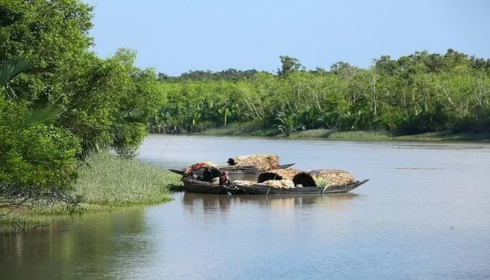If you’re dreaming of a journey where untamed nature meets rich cultural heritage, sundarban travels offer an experience like no other. Situated in the southernmost part of West Bengal, the Sundarbans is the world’s largest mangrove forest and a UNESCO World Heritage Site. It’s renowned not only for its unique biodiversity but also for being the natural habitat of the elusive Royal Bengal Tiger.
A trip to the Sundarbans is ideal for those seeking adventure, tranquility, and a deep connection with nature. Whether you’re a solo traveler, a family, or a nature lover, Sundarban travels can open the door to a mesmerizing world.
What Makes Sundarban Travels Unique?
The Sundarbans are a labyrinth of tidal rivers, dense mangrove forests, and remote villages. This unique ecosystem spans over 10,000 square kilometers and is home to a variety of wildlife including saltwater crocodiles, spotted deer, snakes, water monitor lizards, and over 250 species of birds.
Unlike typical tourist destinations, Sundarban travels immerse you in a world where every sound, ripple, and rustle carries the essence of raw wilderness. It’s an unforgettable journey through nature’s untouched territory.
Top Attractions in Sundarban Travels
1. Royal Bengal Tiger Safari
The star attraction of the Sundarbans is undoubtedly the majestic Royal Bengal Tiger. While spotting one is rare due to their shy and solitary nature, the thrill of tracking their movements through pugmarks and other signs is a unique part of the safari experience.
2. Boat Cruises Through Mangrove Creeks
Explore the dense forest and winding creeks aboard a motorized boat. These safaris offer close encounters with crocodiles basking in the sun, colorful birds perched on mangrove branches, and playful otters diving into the water.
3. Watchtowers and Forest Entry Points
Popular watchtowers like Sajnekhali, Dobanki, and Sudhanyakhali provide a panoramic view of the forest and increase your chances of spotting wildlife. Most forest tours begin at Sajnekhali, which also houses an interpretation center, crocodile pond, and turtle enclosure.
4. Local Village Experiences
Interacting with local communities is a vital part of any Sundarban journey. Witness the simplicity of rural life, enjoy traditional Bengali cuisine, and experience cultural performances like Bonobibi drama that reflects the deep bond between people and the forest.
Best Time to Plan Sundarban Travels
The most suitable time to visit is from October to March, when the weather is cool and pleasant. These months are also ideal for wildlife sightings and comfortable boat safaris. The summer months (April–June) can be hot and humid, while the monsoon (July–September) brings heavy rains and may disrupt travel plans due to flooding.
Accommodation and Dining
From eco-friendly resorts and forest lodges to deluxe houseboats, Sundarban travels offer a variety of accommodation options for every budget. Most packages include meals, which are generally traditional Bengali dishes made with fresh local ingredients. Fish lovers will especially enjoy the diverse seafood offerings.
Useful Travel Tips
- Always travel with a government-approved or reputable tour operator for safety and proper guidance.
- Carry insect repellent, sunscreen, a hat, and light full-sleeve clothing.
- Keep binoculars and a camera ready for wildlife photography.
- Pack essentials like drinking water, medications, and waterproof bags.
- Follow the forest rules strictly and respect the ecosystem.
Conclusion
Sundarban travels promise a one-of-a-kind escape into a land of mystery, beauty, and adventure. From thrilling wildlife encounters and scenic boat rides to enriching cultural experiences, every moment in the Sundarbans is a step into the heart of nature.
So, if you’re ready to swap city lights for star-lit skies and honking horns for the sound of birds and water, the Sundarbans awaits you. Embrace the wild, feel the calm, and create memories that will last a lifetime.













